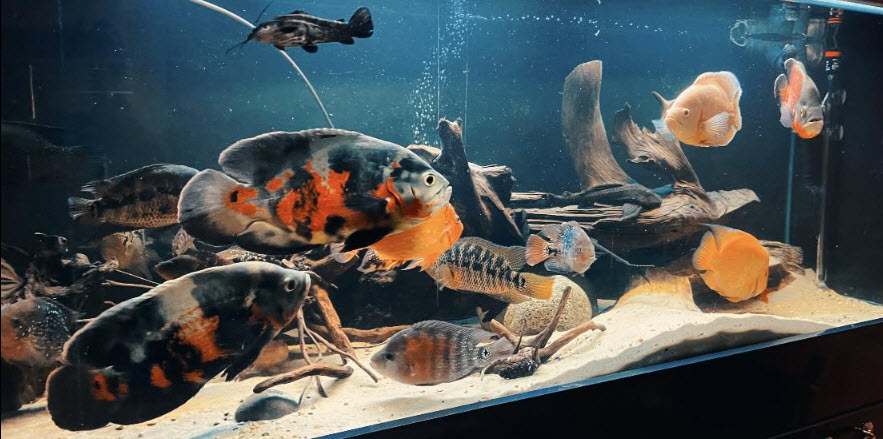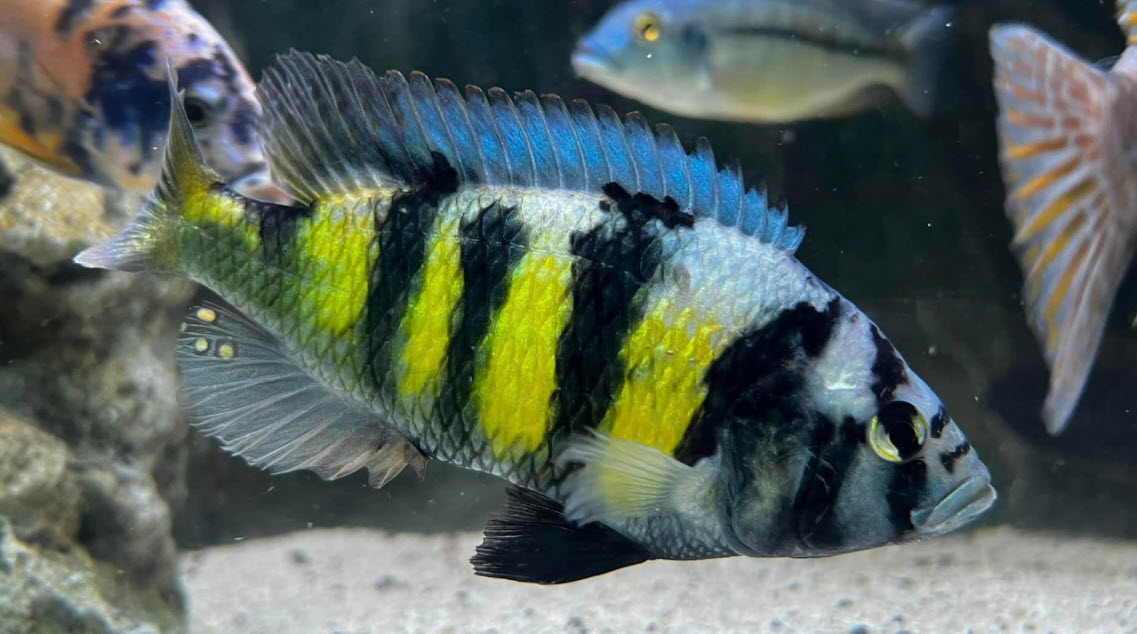
When anyone on social media says they have a sick fish the first question will always be “What are your water parameters?”. Now normally the physical symptoms on the fish itself are much more useful for diagnosing a fish disease than the “water parameters”. But there are exceptions. There are three specific “tank syndromes” where a full list of tank parameters, INCLUDING WATER CLARITY, are useful.

“Old Tank Syndrome”
“Old Tank Syndrome” is where:
- The nitrates climb and drop the dKH of the water below 1.
- The pH will then drop below below 6.5
- Because the pH is low beneficial bacteria will stop oxidizing ammonia
- Ammonia levels will then climb, often maximizing the test
Fish can show signs of stress and irritation. But, surprisingly, often the fish don’t get diseased nor do they die. But add new fish to such a tank and the new fish will often just keel over and die. Note this syndrome CAN be seen in new tanks which are over stocked and/or over fed. We go into this syndrome further in this article:
18.6. Old Tank Syndrome

“New Tank Syndrome”
As this name implies this is normally seen with new tanks where fish were put in without cycling the tank. This syndrome is much rarer than social media will say. And the line of causation is longer than many suppose:
- The beginner overstocks and/or overfeeds their fish.
- The filter cannot adequately filter out the resulting dissolved organic compounds and ammonia.
- The dissolved organic compounds feed a bacterial bloom.
- Extended bacterial blooms (longer than three or four weeks) will result in diseased fish, both directly from pathogenic heterotrophic bacteria and indirectly by consuming immune system resources.
- Elevated ammonia levels add to the fish stress levels and energy consumption.
- And the fish get diseased and die.
For more on this topic go to this article:
2.7. New Tank Syndrome
Note that most new aquariums will get cloudy water and ammonia spikes as they cycle. This is not a problem and will clear if it is just left alone. If one does a lot of water changes one will just prolong the agony.

“Sick Tank Syndrome”
A very common question on the aquarium forums is along the lines of:
“My water parameters are perfect (0 ammonia, 0 nitrites and 0 nitrates) yet my fish keep dying. Why are my fish dying?”
This person probably has some version of the “sick tank syndrome”. Invariably they will have “dull” or slightly cloudy water. Also, most of the time, the person has the following three factors:
- low surface area, poor, biofiltration
- feeding too much (more than the fish can consume in one minute once a day)
- a low protein food (less than 45% protein for dry commercial fish food)
The filter on the “sick aquarium” will need frequent cleaning as it is always mysteriously getting “full of gunk”. And the nitrates will also mysteriously be very low or zero.

This “sick tank syndrome” is unfortunately common with newcomers to the hobby. Almost all newcomers have small cartridge filters, either internal or hang on back, which don’t supply the needed biofiltration. Almost all newcomers overfeed their fish. And, if the newcomer has selected one of the off-the-shelf flake fish foods, it will typically have a low protein level. So, it is not uncommon for the newcomer to have fish dying left and right with “perfect water parameters”.
The line of causation in this syndrome is very long and involved. We go into this syndrome in depth in the following article:
18.7. Sick Tank Syndrome
One unique and relatively rare tank syndrome is also covered in this article, namely a “sick planted tank syndrome”. This is where an established planted aquarium with “perfect water parameters” rapidly goes downhill and forms masses of gray-brown gunk everywhere in the tank.
Return to Temperature, pH, KH and GH
.
Aquarium Science Website
The chapters shown below or on the right side in maroon lead to close to 400 articles on all aspects of keeping a freshwater aquarium. These articles have NO links to profit making sites and are thus unbiased in their recommendations, unlike all the for-profit sites you will find with Google. Bookmark and browse!

Archie says
Hi, Dave, thank you so much for all your writings, especially on the heterotropic bacteria in water column. I have a 40 breeder that I followed Father Fish’s lot of leaf litter method and it made my once-thriving plants slowly dying. Water became murky and I didn’t know what to do until I read your theory. In the past 3 weeks, I have taken all the leaves and organic matter from the tank and conducted four large water changes (~ 75% water change each time) and I began noticing some of the plants came back to life. Luckily none of my fish are negatively affected. I think your theory really works. Thank you!
Dave says
In reply to Archie …… Based on feedback from about ten users of my website there are at least ten hobbyists who wish Father Fish had never come up with his “pour in the leaf litter” method of keeping fish. A small amount of leaf litter is a good thing, a lot of leaf litter will produce a cesspool of dead fish.
Archie says
Question to David:
Father fish’s aquariums are almost always dull and cloudy looking. He put in lots of leaves litter in his heavily planted low-tech dirted tanks and just let them rot. Isn’t it creating a water column full of carbohydrate that results in high water column heterotrophic bacteria counts? And yet his aquariums prove to be healthy for both the plants and the fish.